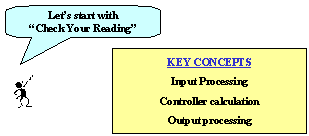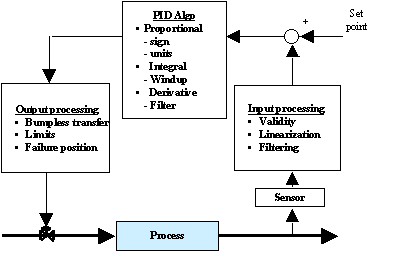

Chapter 12 PRACTICAL APPLICATION OF FEEDBACK
Check Your Reading Study Questions Thought Questions
The questions will be categorized according to the key concepts in the Chapter.
| Input Processing | Control Equipment |
|
Output Processing |
Controller Calculation |
|
|
|
| Check Your Reading |
Solidify the Concepts |
| 12.1 All control valves used for pressure control should be fail open to prevent pressure buildup. |
|
|
|
| 12.2 Consider the situation in which a control loop has been functioning well; then, the failure position of the valve was switched. What would have to be changed in the computer algorithm? |
|
| 12.3 If we average many readings from a sensor with excellent reproducibility, we will obtain a value very close to the true process variable. |
|
|
|
| 12.4 Measured values should be filtered to smooth sensor noise before being displayed on trend plots. |
|
|
|
| 12.5 Using proportional band (PB) and reset time (TR) in the PID algorithm can dramatically improve control performance. |
|
|
|
| 12.6 Commercial digital control systems have controller gains that are always greater than or equal to zero. |
|
|
|
| 12.7 When the controller is placed in service, which of the following are performed as part of the initialization? |
|